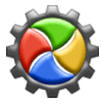
Advertising seems to be blocked by your browser.
The ads help us provide this software and web site to you for free.
Please support our project by allowing our site to show ads.
Download Telex USB Microphone Computer Driver Update
| Category | MEDIA | |
| Device driver for | Telex USB Microphone | |
| Release date | 7-1-2001 | |
| Windows version | Windows XP (5.1) 32 bit | |
| Manufacturer | Telex | |
| Version | 5.1.2535.0 | Download |
Description extracted from Wikipedia:
the teleprinter network thumb|A Teletype Model 32 used for Telex service The telex network was a customer-to-customer switched network of teleprinters similar to a telephone network, using telegraph-grade connecting circuits for two-way text-based messages. Telex was a major method of sending written messages electronically between businesses in the post-World War II period. Its usage went into decline as the fax machine grew in popularity in the 1980s. The "telex" term refers to the network, and sometimes the teleprinters (as "telex machines"), although point-to-point teleprinter systems had been in use long before telex exchanges were built in the 1930s. Teleprinters evolved from telegraph systems, and, like the telegraph, they used binary signals, with symbols represented by the presence or absence of a certain level of electric current. This differs from the analog telephone system, which used varying voltage to represent sound. For this reason, telex exchanges were entirely separate from the telephone system, with their own signalling standards, exchanges and system of "telex numbers" (the counterpart of telephone numbers). Telex provided the first common medium for international record communications using standard signalling techniques and operating criteria as specified by the International Telecommunication Union. Customers on any telex exchange could deliver messages to any other, around the world. To reduce line usage, telex messages were encoded onto paper tape and then read into the line as quickly as possible. The system normally delivered information at 50 baud or approximately 66 words per minute, encoded using the International Telegraph Alphabet No. 2. In the last days of the telex networks, end-user equipment was often replaced by modems and phone lines, reducing the telex network to what was effectively a directory service running on the phone network.


